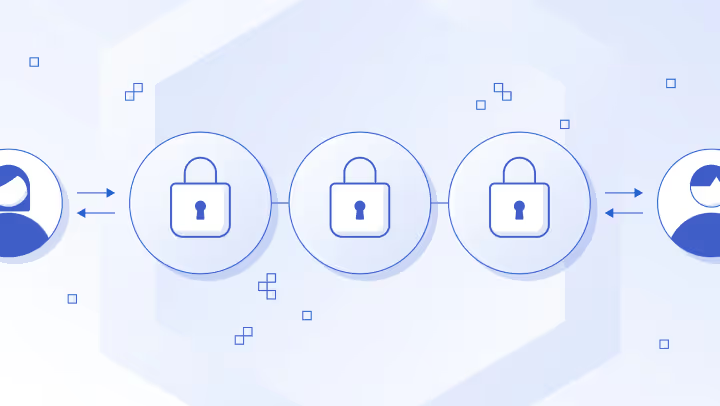Top 6 Smart Contract Languages in 2024
A smart contract language is a programming language used to create self-executing contracts that automatically enforce agreement terms.
If you’re looking to become a Web3 developer, you need to know how to write smart contracts—the backbone of all Web3 applications.
In a nutshell, smart contracts are computer programs that are deployed and executed on a blockchain network, offering deterministic guarantees that enable multiple parties to come to an agreed-upon, tamper-proof result.
There are a wealth of novel smart contract use cases being built today, from financial applications to games, to offer users more equitable access to financial primitives, stronger, trust-minimized guarantees, and sovereign ownership over digital assets.
Top Smart Contract Languages

Solidity
Solidity is the most popular blockchain programming language of the Ethereum Virtual Machine (EVM), also widely used across a range of EVM-compatible blockchains.
Solidity Pros
Solidity is a high-level, Turing-complete language, which means developers can write code substantially faster as many of the low-level concerns are abstracted away. Solidity syntax is also similar to Javascript, one of the most popular programming languages in the world, making it a great starting point for developers transitioning to Web3.
For new smart contract developers, another perk of Solidity is that it comes with built-in protective measures—which can prevent costly mistakes. And as the most widely used language in Web3, Solidity developers have access to more libraries and tooling, better documentation, and increased developer support in forums.
Solidity Cons
For developers who don’t have much experience in object-oriented programming, Solidity’s syntax can sometimes be confusing, and its function overloading features are often detrimental in the context of code readability. There are also a few quirks of Solidity development that developers may not be used to, such as its inability to natively support decimals.
For advanced Web3 developers, coding in Solidity often results in higher gas costs compared to lower-level languages.
Vyper
Vyper is the second most widely used Web3 programming language after Solidity for EVM-compatible blockchains. It is a contract-oriented, pythonic programming language with strong typing, small compiler code, and efficient bytecode generation.
Vyper Pros
Vyper code looks and feels like Python—making it one of the best starting points for Python developers jumpstarting their Web3 development journey.
Vyper also has a simple language and compiler implementation, which helps with code readability and auditability—making it easier for developers to build secure smart contracts in production. And as the second most adopted smart contract programming language, Vyper has many of the same tooling and resources as Solidity.
Vyper Cons
Vyper still lacks the widespread community support that Solidity has, and there are Solidity-native tools that are currently unavailable in Vyper.
Vyper also lacks modifiers, class inheritance, and recursive calls, and the programming language is not Turing-complete. The lack of many of these features is down to deliberate design choices with the goal of maximizing contract security and auditability, but it requires extra work from developers to work around these limitations. And as a newer language, Vyper is still under development, which means fewer features.
Other Languages
Solidity and Vyper are the two powerhouses in smart contract development today, but there are also a variety of emerging blockchain coding languages.
Yul
Yul is an intermediate language for Ethereum that supports the EVM.
Built to translate straightforwardly to bytecode, Yul excels at optimizing smart contracts and reducing gas costs for more advanced Web3 developers. While Yul is a fantastic learning resource, it’s best for writing specific, performant code. As a standalone coding language, Yul currently lacks tooling and ecosystem support.
Cairo
Cairo is a Turing-complete smart contract programming language built for creating STARK-provable programs for general computation.
Cairo is predominantly used within StarkNet—a layer-2 blockchain built on top of Ethereum—and its core feature is that program logic is converted into STARK proofs, providing verifiable computation that’s settled on the Ethereum blockchain. While it is a powerful language for building fast and scalable smart contracts, Cairo is largely unsupported outside of the StarkNet/StarkEx ecosystem.
Rust
Rust is a popular smart contract programming language for many non-EVM-compatible blockchains such as Polkadot and Solana, and unlike many of the other languages listed here, it’s not just for Web3 development.
The Rust programming language itself is efficient, secure, and reduces unnecessary bloat—Rust data structures are quite compact, making it a good fit for blockchain space constraints. That said, many blockchains don’t yet have full-fledged tooling or robust support for the Rust programming language.
Move
Move is a Rust-based smart contract programming language originally developed for Meta’s Diem blockchain.
Move introduces a novel system built on three core premises—first-class resources, improved safety, and upgrade verifiability. Most notably, Move’s programming language integrates resources at the type level rather than supporting any single type of coin (i.e., ether or bitcoin) for blockchain-agnostic integrations. Today, Move is primarily used within the Aptos and Sui blockchains, and is largely unsupported outside of that.
How to Choose the Best Smart Contract Programming Language
Different blockchains support different languages, which means there’s no one-language-fits-all solution for smart contract developers. If there’s a coding language that you’re already comfortable with, the non-exhaustive chart below will help identify the blockchains that support your preferred language for smart contracts.

For developers looking to jump into Web3 without knowing which blockchain they want to build on or which language they want to learn, Solidity and Vyper are the best languages for exploring how smart contracts work and what kind of developer tooling to look out for. Then you can branch out from there.
Keep in mind that the Web3 development space is constantly growing and evolving—Web3 developers make up only a fraction of the entire developer population.

While languages may wax and wane in popularity, a deep understanding of smart contracts and how they work across blockchains will always serve you well. The most important thing is to dive in and get started.











